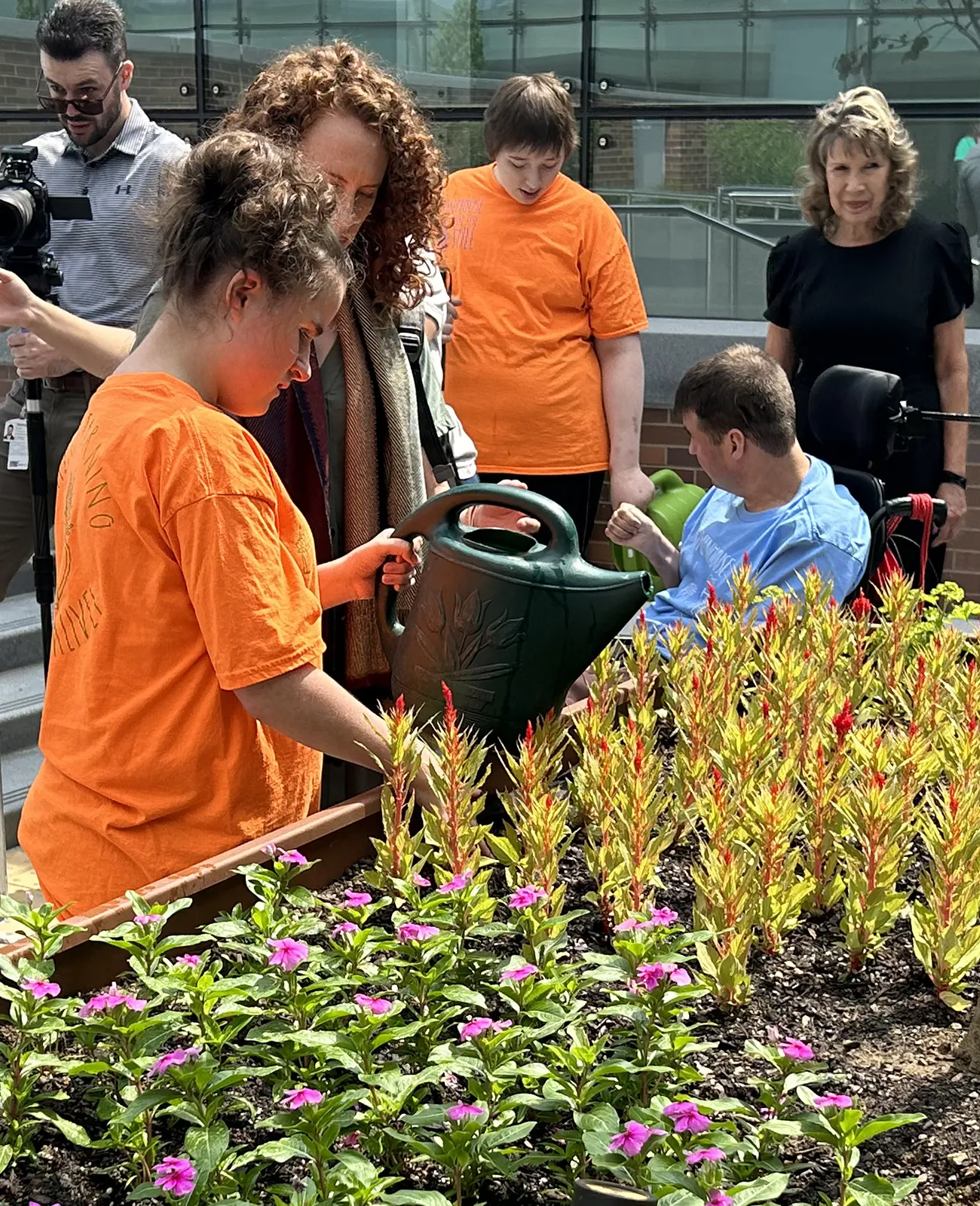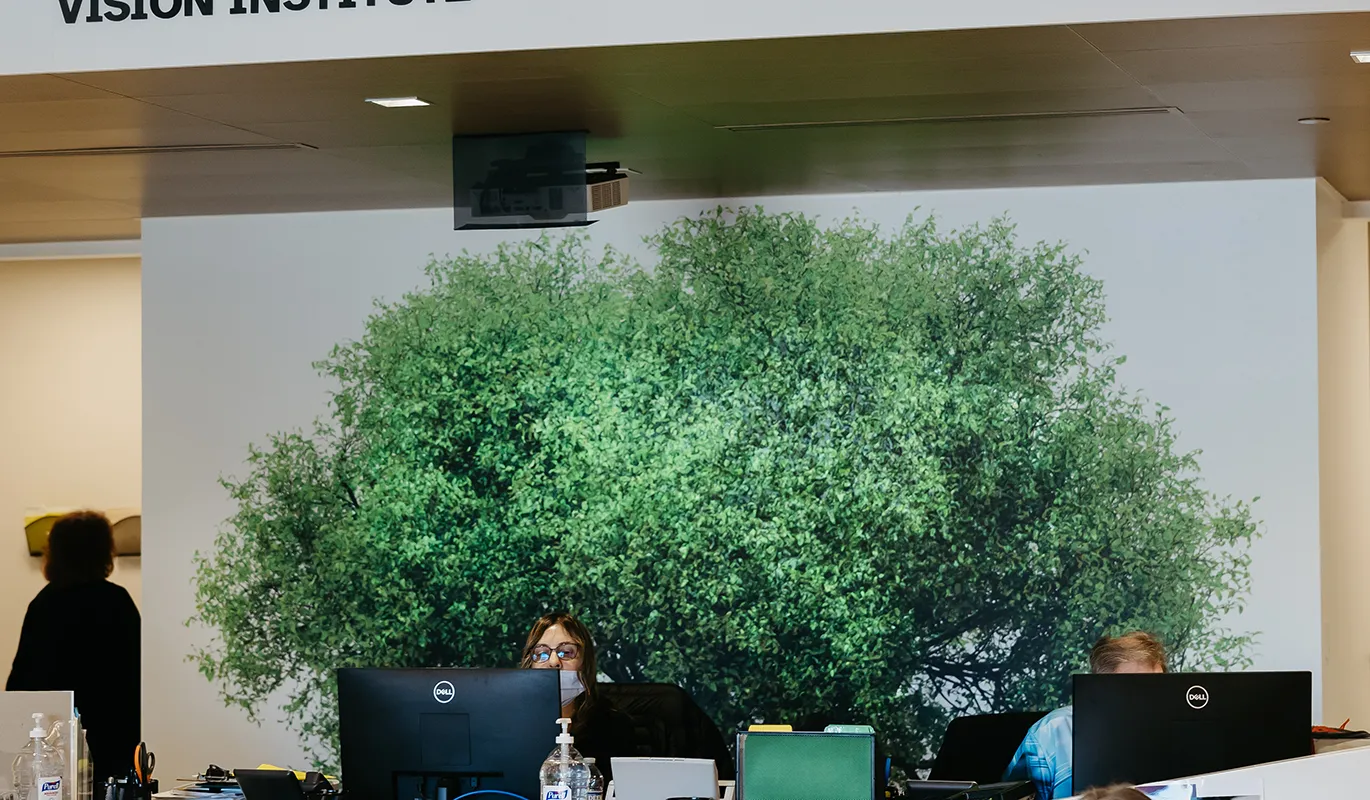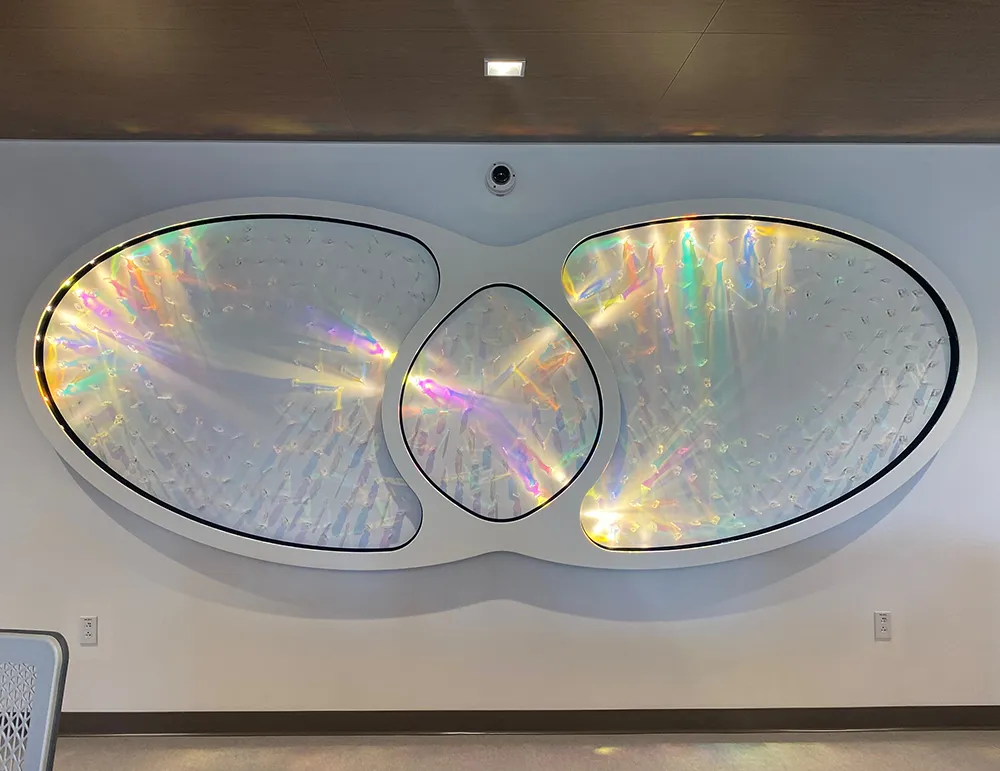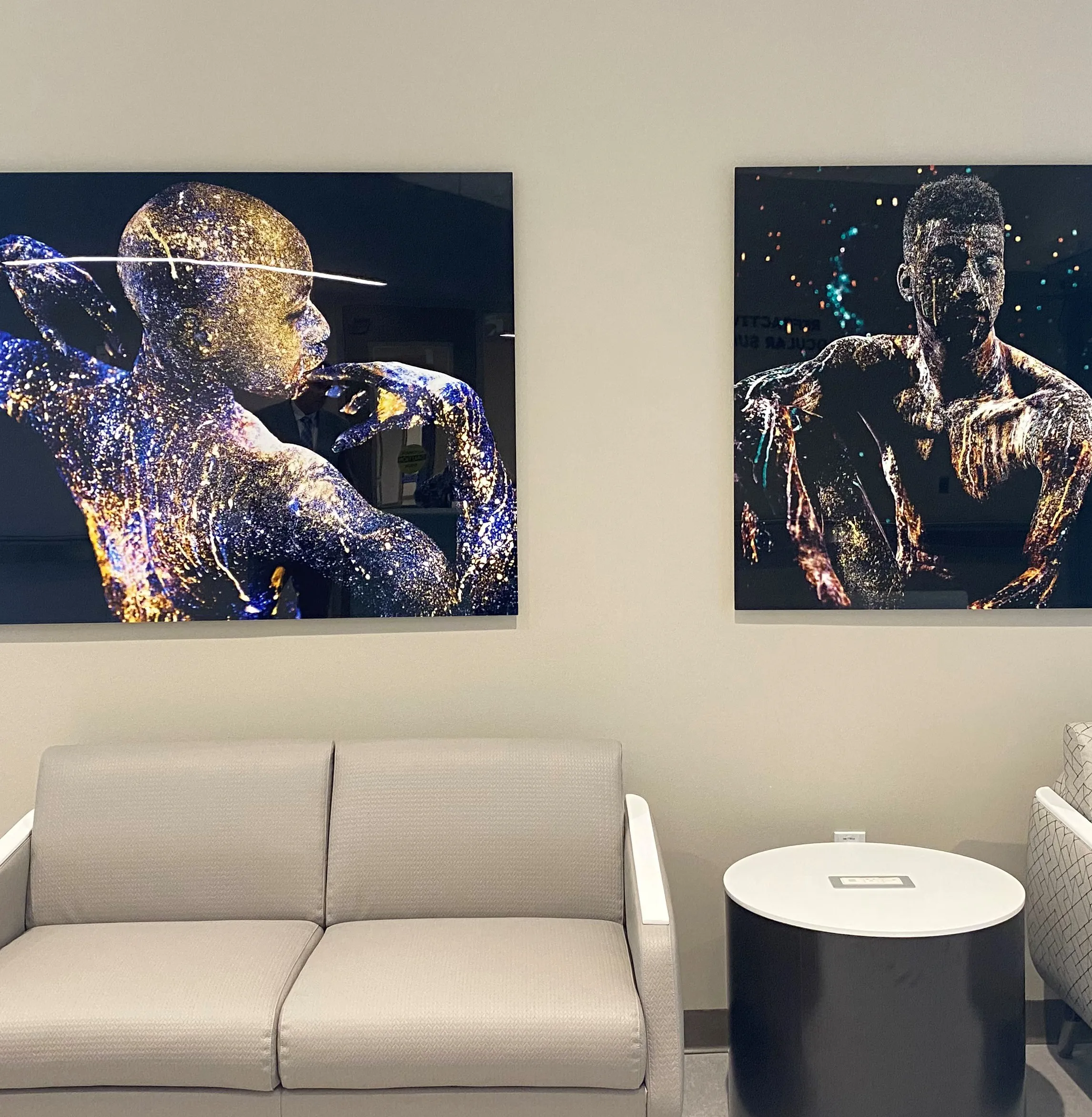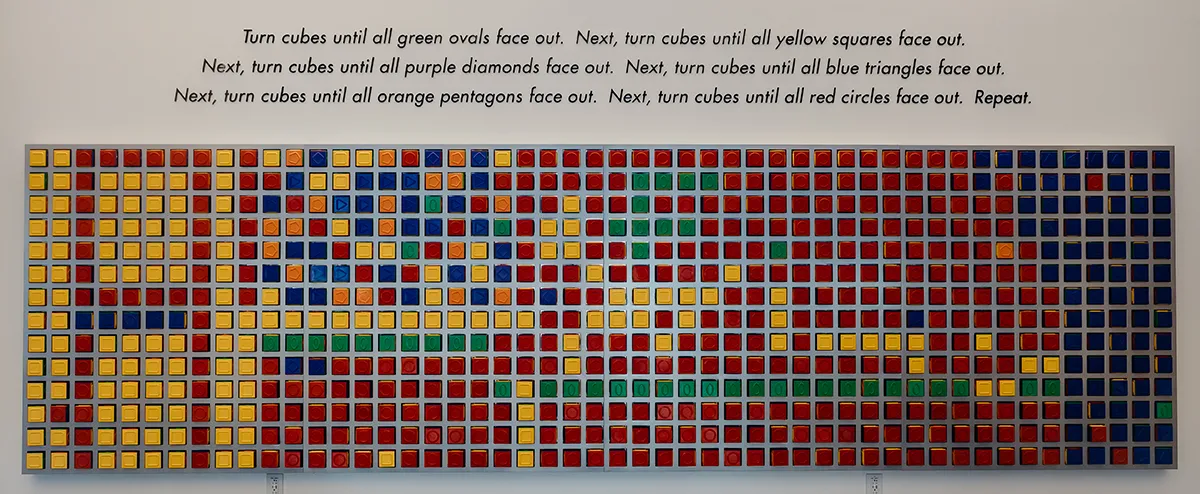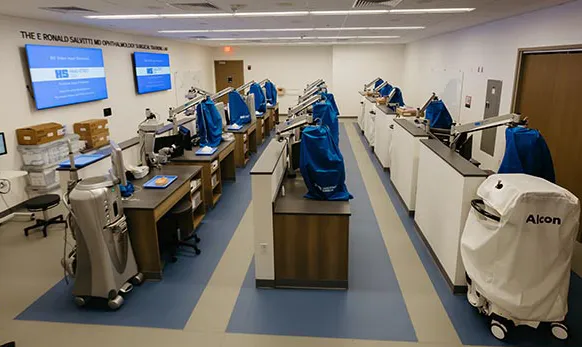at UPMC Mercy Pavilion
The Vision Institute at UPMC Mercy Pavilion is the first of its kind in the nation, a one-stop shop for people with vision issues.
When José-Alain Sahel, MD, arrived in Pittsburgh in July of 2016 to assume the Distinguished Professor and Chair of Ophthalmology role at the University of Pittsburgh, UPMC leadership saw an opportunity. With his skills and experience as the Founder of the Institute de la Vision in Paris, this was a chance to create an asset in the community for people with vision loss worldwide.
The $510 million project took nearly six years to complete, with the 410,000-square-foot building opening May 1, 2023. The nine-story pavilion is also home to the UPMC Rehabilitation Institute.
In the vision tower section of the building, everything was designed, chosen, and built intentionally, and it is all dedicated to ophthalmology. There are eight eye disease operating rooms, 83 eye exam rooms, 10 rehab exam rooms and 100,600 square feet of research space, including a collaborative staircase that brings together education and research with the goal of having people meet.
A pharmacy, café, and optical shop housed in the Vision Institute are open to the Public. The ground floor has an Urgent Care Eye Clinic, one of the few clinics in the country dedicated to the care of eye emergencies, one of only two in Pennsylvania, and the only one in the region. Comprehensive care and outpatient testing are also on this floor.
Floor two has clinical services for people with glaucoma, retina, and cornea issues with exam rooms configured for flexibility of use between services. Patients do not have to move back and forth between waiting rooms; they are guided right to their location.
The popular Dry Eye Clinic on the third floor is unique because of its coordinated, multi-disciplinary care model. Dedicated surgical space on this floor. The fourth floor is for innovation and education, a world-renowned education and training center educating patients, practitioners, and providers. There are meeting spaces on this floor for this purpose.
The Fine Foundation Winter Garden is an indoor space meant to be used by staff and scientists but can also welcome events and visitors. Just next to the Winter Garden is the Bruce and Barbara Wiegand Roof Terrace, also used by faculty, staff, and visitors. Some of the gardens are designed and maintained by the Western PA School for Blind Children in partnership with UPMC. The sensory garden has different landscape pathways and other features to make it accessible to people with vision issues.
Low vision and rehabilitation spaces include a Street Lab to assess functional vision loss and a driving simulator that looks at driving performance in a variety of conditions and help patients develop better strategies on how to drive safety. There is also a life skills apartment with a kitchen, living room, bedroom, and laundry room, to allow patients to simulate real-world activities.
The E. Ron Salvitti, MD Surgical Training Laboratory is a state-of-the-art surgical education training center with 16 workstations, The fifth-floor houses a clinical trial space. It is fully equipped to develop all the new approaches to therapies and contains real life assessment. Research suites are housed on floors seven through nine.
In addition to various clues to help patients navigate, there is a thoughtful color scheme along with special lighting so people with low vision can adapt. Great thought was put into the navigation design for people with low vision, as well as those who use a cane, to find their way to their location
A national call for artists resulted in the artwork that is integrated as part of the holistic care experience. Several of the pieces are kinetic, and two are interactive, responding to touch and sound. All artists considered the needs of patients and caregivers, and their work is meant to stimulate conversation and facilitate connection. In publicly accessible areas, the art also assists in wayfinding. Two of the artists with from Pittsburgh, and three self-identify as artists with disabilities, including one who lost his vision in the Vietnam War.
In the Visions Institutes, with 9,712 new patents. The total patient visits, with 9,712 new patients. The number of total surgeries performed that year was 6,171. Looking back on the inaugural year, Dr. Sahel said that patient experience and the ability to attract clinical and research talent exceeded his expectations.
The $510 million project took nearly six years to complete, with the 410,000-square-foot building opening May 1, 2023.
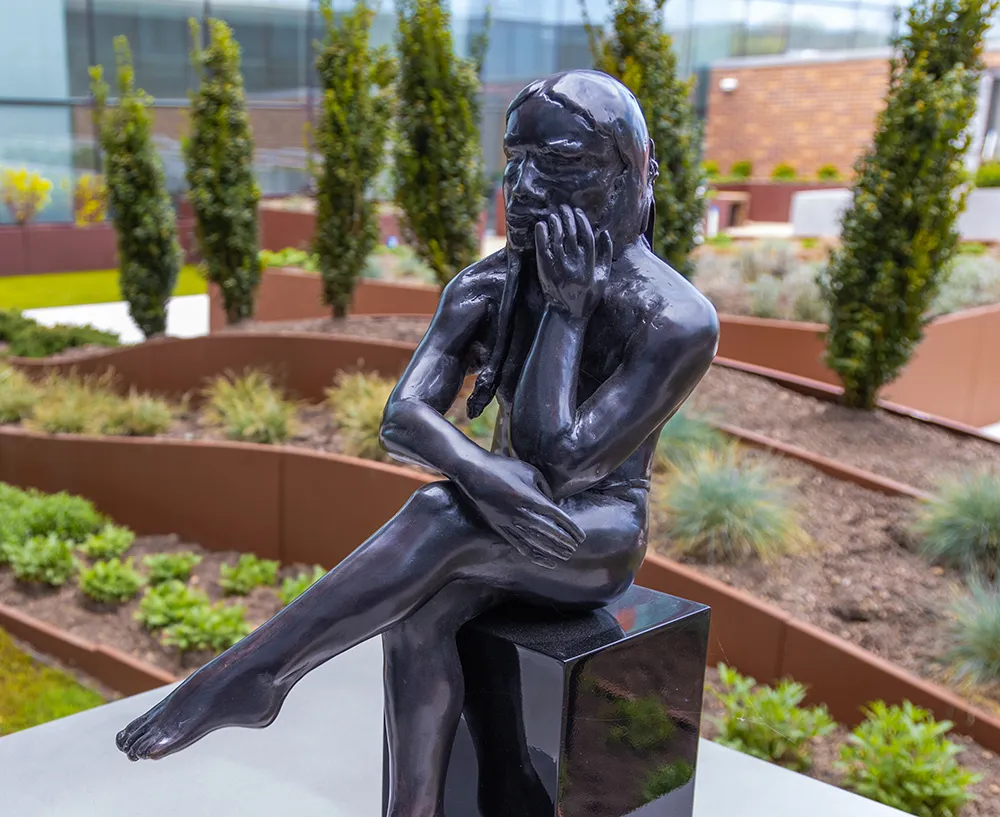
Bringing State-of-the-Art Eye Clinics to the UPMC Vision Institute
The Vision Institute at Mercy Pavilion is home to state-of-the- art eye clinics on four floors that comprise comprehensive, glaucoma, neuro-ophthalmology, oculoplastics, glaucoma, cornea, low vision, refractive surgery, retina, as well as an ophthalmology operating suite and urgent clinic.
The clinic pods are designed with a “patient owns the room model,” so that the patient can safely leave personal items in their room as they are taken for testing or minor procedures. The pods have designated procedure rooms in close proximity to the examination rooms for patient convenience and clinic efficiecy
The Urgent Eye Care Clinic opened in October of 2023, and is unique in the ophthalmology community nationwide with a separate street entrance, examination suite, and waiting room. The clinic is overseen by general ophthalmologists with subspecialty care available upstairs, and supported by a team of optometrists, residents, and physician assistants
The specialty clinics include:
- Several large minor procedure rooms on the first three floors
- A low vision suite that houses a fully functional apartment to allow patients to be educated on independent living in a realistic setting
- A refractive surgery suite including two intralase machines
- A dry eye clinic with the latest equipment for treatment of this common yet impactful condition
- A retinal dystrophy clinic with in-house genetic counselors
- The Campbell Laboratory, unique in the country as a processing center for analysis of all ophthalmic specimens
- A venipuncture lab for preparation of serum tears
- A compounding pharmacy across the connected walkway in Mercy Hospital
The operating suite includes:
- 8 operating rooms with ceiling-mounted microscopes
- Multiple machine platforms from different suppliers for cataract, corneal, glaucoma, and retinal surgery
- In-suite satellite pharmacy
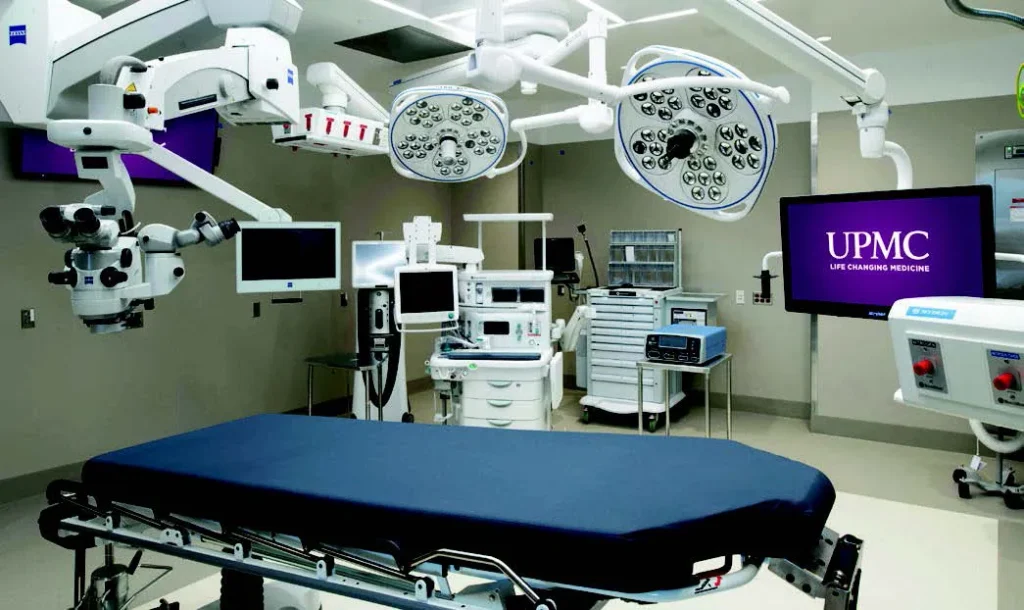
A Patient-Centered Approach To Low Vision Rehabilitation That Involves Novel Technologies
The UPMC Vision Institute has a patient-centered approach to low vision rehabilitation that involves novel technologies.
According to Dr. Jose-Alain Sahel, Chair of the Department of Ophthalmology, there is a tendency to be focused on therapies and ways to fix visual conditions. Assessments are based on classical testing, but this may not fully reflect what occurs in patient’s daily lives. It is also important to demonstrate therapy’s benefit in daily life. This is part of a continuum of care that begins at diagnosis and aims to return patients to the lives they previously enjoyed.
To that end, the mission of the StreetLab at the Paris and Pittsburgh Vision Institutes is to enhance the quality of life of people with low vision. This involves improving their function, promoting their independence, and promoting their productivity in society.
Rakié Cham, PhD, researcher and full professor in the Departments of Bioengineering, Ophthalmology, and Physical Therapy at the University of Pittsburgh co-leads the StreetLab with Dr. Sahel. The StreetLab boasts a multidisciplinary team and is housed on the fifth floor of the Vision Institute.
The StreetLab assesses an individual’s needs and their perception of their impairments, which may include visual field loss and visual acuity deficits.
Vision loss is a big risk factor for falls, so balance assessment is the first thing done at the STreetLab. Additionally, in collaboration with Paris colleagues, the StreetLab has a state-of-the-art mobility assessment called the Mobility Standardized Test (MoST) in Virtual Reality.
“One of the questions that might come up is what’s the connection between work that is happening in low vision at the Vision Institute and in the area of low vision rehabilitation?” asked Clive D’Souza, PhD, MS, Assistant Professor and researcher in the Department of Rehabilitation Science and Technology at the University of Pittsburgh School of Health and Rehabilitation Sciences.
That connection is driving, which is vital to access and independence. A driving simulator at the Vision Institute allows patients’ driving skills to be assessed and evaluated in a safe environment. It has the look and feel of an actual driver station and captures the physical movement of a real car.
“We are able to give feedback and training so they can develop more safe driving habits,” Dr. D’Souza concluded.
Low Vision Research
William Smith, OD
Director of Low Vision Service
Program Director of the
Optometry Residency Low Vision Program
Assistant Professor of Ophthalmology
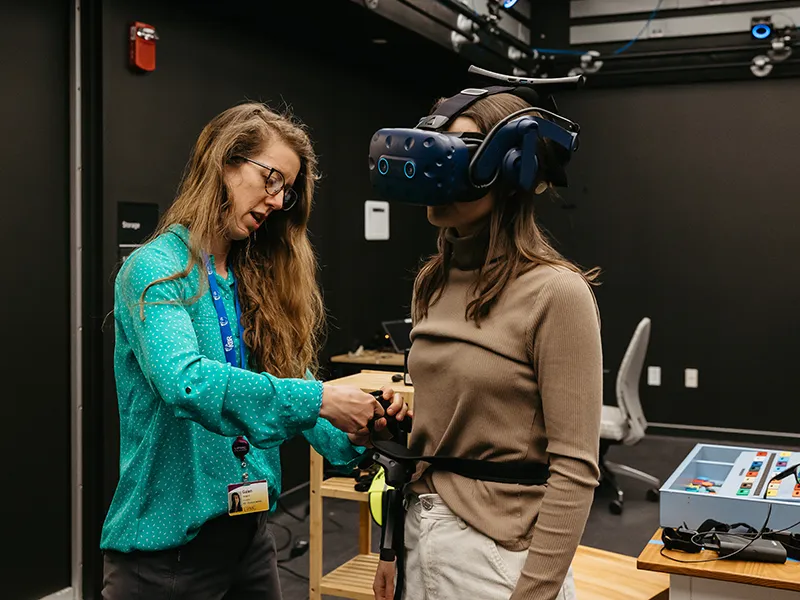
StreetLab
StreetLab at the Vision Institute aims to enhance the quality of life of people with low vision by improving their function and promoting their independence and productivity in society.
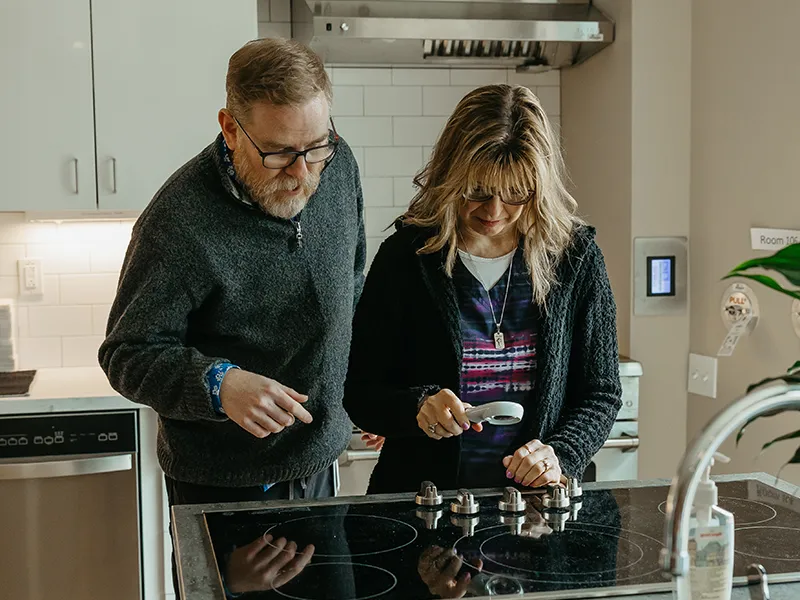
Life Skills Apartment
The Vision Institute has a life skills apartment with a kitchen, living room, bedroom, and laundry room where patients can simulate daily activities. Patients can engage in the activity instead of us trying to show them some things on the counter and then hope they can translate that at home.
The Dry Eye Clinic
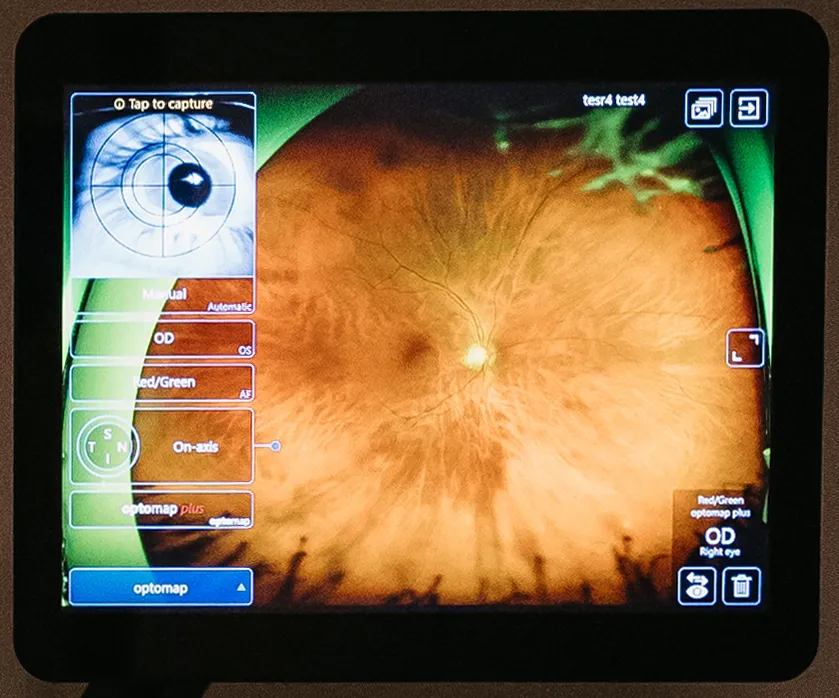
The Dry Eye Clinic – which opened at the Vision Institute in November 2023 – is unique because of its coordinated care. It has grown tremendously in the short time it has been open, according to Sabrina Mukhtar, MD, Assistant Professor of Ophthalmology and Director of the Dry Eye Clinic.
“There is a significant need for a more in-depth approach to dry eye disease, especially for the complex patients we see at the UPMC Vision Institute,” she said.
Among the features that make the clinic stand out is the machine learning program, CSI Dry Eye, which was created by one of the previous UPMC Cornea Fellows, Dr. Ahmed Al-Ghoul. The program helps document and track dry eye metrics to provide objective data for diagnosis and monitoring prognosis. The clinic has a multidisciplinary approach to dry eye disease; working with all members of the team at the UPMC Vision Institute to provide exceptional care. It is also considered a “one-stop shop,” where available products are suggested to patients, and serum tears are drawn and delivered to the patient during the appointment. Providers can spend time with the patients, due to longer patient blocks built into the schedule. This allows them to “really dig deep into the underlying mechanism of dry eye disease specific to the patient so that we can profide holistic targeted treatment,” said Dr. Mukhtar.
Having this clinic is important because dry eye disease is a significant cause of ocular morbidity with several studies showing how it impacts quality of life. It is a complex disease process anchored in inflammation with several risk factors – some of which are modifiable.
Appointments start well before the scheduled clinic day when the front desk staff calls patients to schedule. Lengthy questionnaires are sent that require patients to share lifestyle factors, medications, diet, sleep, hydration, and other factors that may affect dry eye disease. Upon check in, technicians review the questionnaires and provide targeted imaging/testing based on the reason for referral, and then Dr. Mukhtar sees the patient and helps come up with a targeted treatment plan. A coordinator helps schedule procedures and provides patient education. At the end of the appointment, a file is available for patients to review their testing and next steps in the plan. On follow ups, dry eye questionnaires are administered so patients can monitor their prognosis.
The next goal is to integrate advanced levels of imaging, including confocal imaging to image corneal nerves and inflammatory cells into diagnostics. They are working to also provide personalized biomarker diagnostics so that they can help patients navigate the myriad of medications available in the market. Lastly, the clinic is collaborating with scientists to help advance care in dry eye disease.
The Dry Eye Clinic is locate on the third floor of the Vision Institute, in the Refractive and Ocular Surface Suite. Clinic is typically on Fridays from 8 a.m. to 5 p.m., but procedures are performed on certain Wednesday afternoons of the month as well, specific to dry eye treatment.
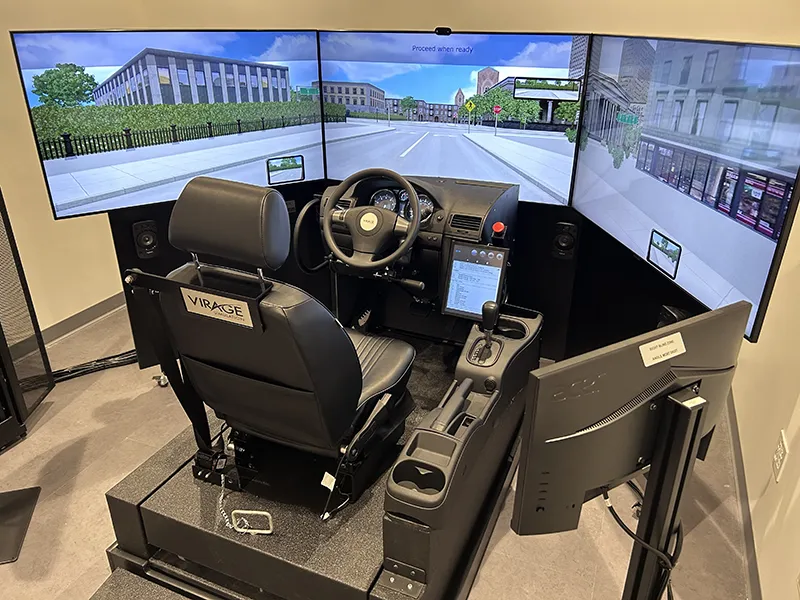
Driving Simulator
The driving simulator features original vehicle components such as the steering wheel, gas/brake pedals, driver seat, and dashboard-mounted on a wheelchair-accessible motion platform, a 180-degree field-of-view using three large visual displays, blindspot displays, and surround sound audio feedback. The motion platform is calibrated to reproduce movement cues exactly corresponding to the driver’s responses. The software program running the simulator contains various customizable driving scenarios from basic to more complex situations, safe to more hazardous road conditions, and impaired and distracted driving.
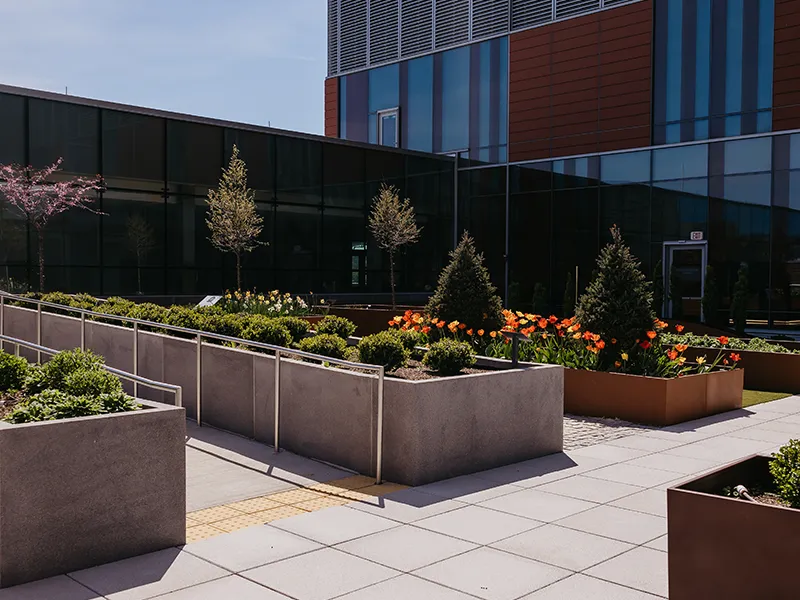
Sensory Garden
This Sensory Garden has landing strips of gravel, turf, brick, and pavement, along with stairs. This allows the team to assess people’s mobility and make recommendations to help them maneuver more safely. Lighting and contrast assessments are also conducted outside, in the sensory garden’s natural environment. The plants are tactile and fragrant. The Western Pennsylvania School for Blind Children helps maintain the garden.
